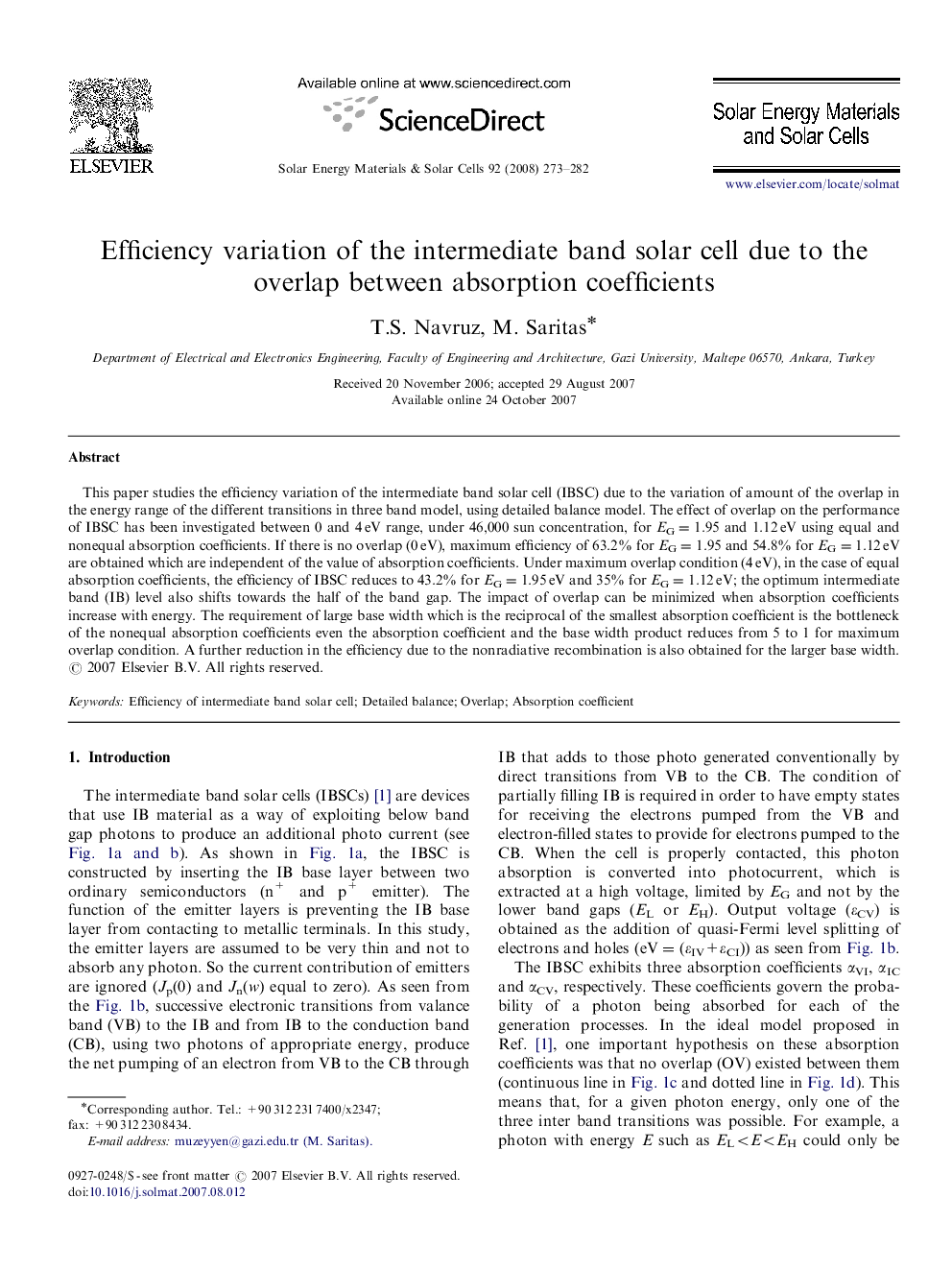| Article ID | Journal | Published Year | Pages | File Type |
|---|---|---|---|---|
| 80872 | Solar Energy Materials and Solar Cells | 2008 | 10 Pages |
This paper studies the efficiency variation of the intermediate band solar cell (IBSC) due to the variation of amount of the overlap in the energy range of the different transitions in three band model, using detailed balance model. The effect of overlap on the performance of IBSC has been investigated between 0 and 4 eV range, under 46,000 sun concentration, for EG=1.95 and 1.12 eV using equal and nonequal absorption coefficients. If there is no overlap (0 eV), maximum efficiency of 63.2% for EG=1.95 and 54.8% for EG=1.12 eV are obtained which are independent of the value of absorption coefficients. Under maximum overlap condition (4 eV), in the case of equal absorption coefficients, the efficiency of IBSC reduces to 43.2% for EG=1.95 eV and 35% for EG=1.12 eV; the optimum intermediate band (IB) level also shifts towards the half of the band gap. The impact of overlap can be minimized when absorption coefficients increase with energy. The requirement of large base width which is the reciprocal of the smallest absorption coefficient is the bottleneck of the nonequal absorption coefficients even the absorption coefficient and the base width product reduces from 5 to 1 for maximum overlap condition. A further reduction in the efficiency due to the nonradiative recombination is also obtained for the larger base width.
